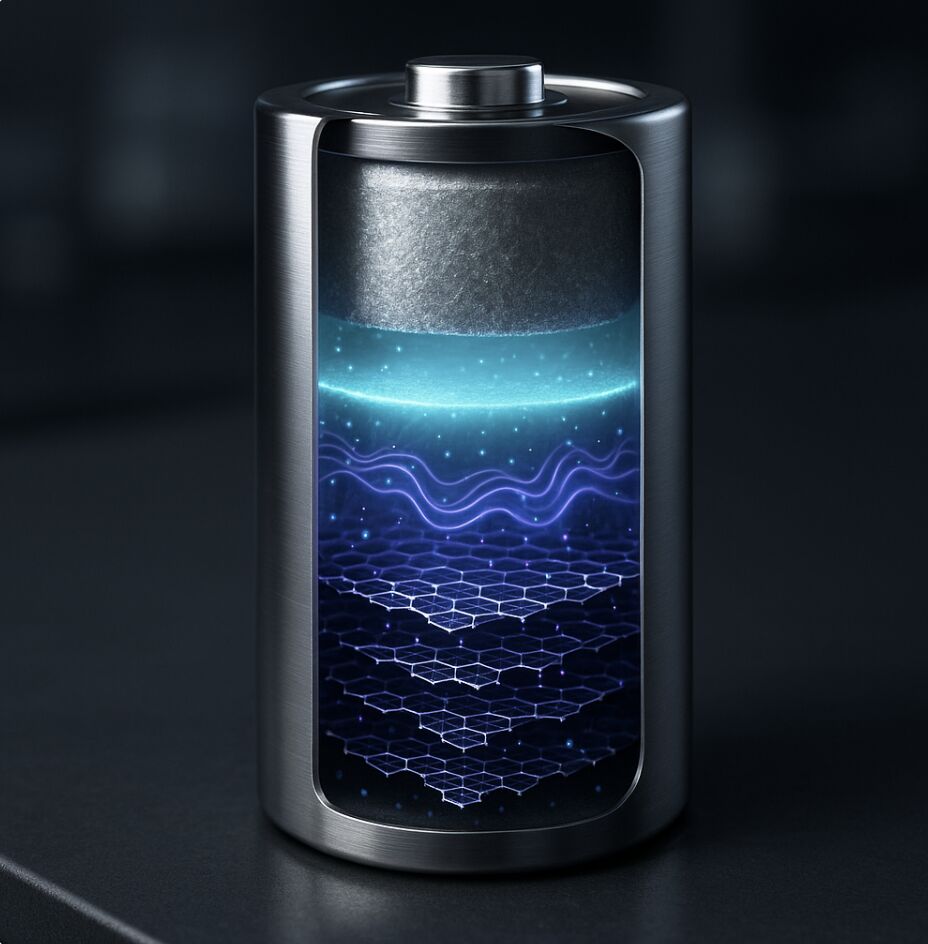Scientists Employ Quantum Material for a New Type of Battery
A new approach to developing advanced, lithium-free batteries and a deeper understanding of charge storage mechanisms in aqueous electrolyte using aluminum ions are the focus of a recent study published in Advanced Science. The research, conducted by scientists from VSB – Technical University of Ostrava and Palacký University Olomouc, introduces a novel nanocomposite combining a conductive polymer with a quantum material — the topological insulator Bi₂Te₃ — known for its unique electronic properties. The resulting material shows great promise for the development of low-cost, environmentally friendly aqueous batteries with high capacity and stability.
Aqueous aluminum-ion batteries (AAIBs) are a class of rechargeable batteries that utilize water-based electrolytes and trivalent aluminum ions (Al³⁺) as charge carriers. Compared to conventional lithium-ion batteries, they offer improved safety due to their nonflammable aqueous solvents and can be manufactured at lower cost. Aluminum ions also carry more charge than lithium, increasing the theoretical capacity of the battery. However, the technology is still in its early stages, and one of the main challenges remains the poor plating/stripping performance of aluminum in aqueous electrolytes due to the formation of a passivating oxide layer. The newly developed material effectively addresses this issue.

“The interconnected network of the conductive polymer polypyrrole (PPy) and Bi₂Te₃ enables the anode to deliver an impressive discharge capacity of 438 mAh g⁻¹ at a current density of 0.5 A g⁻¹. Even at a high current density of 10 A g⁻¹, it retains a prominent discharge plateau, outperforming most electrode materials reported to date for aqueous aluminum-ion batteries,” explained corresponding author Martin Pumera from the Faculty of Electrical Engineering and Computer Science at VSB-TUO, who is also involved in the REFRESH project. The mechanistic insights were provided by the IT4Innovations team led by Michal Otyepka, using computational chemistry techniques.
Bi₂Te₃, a topological insulator, allows highly efficient charge transport along its surface, facilitating rapid movement of both ions and electrons. The surrounding polypyrrole forms a connected conductive network that increases the active surface area and enhances the overall structural stability of the material. As a result, the anode exhibits high capacity, fast charge/discharge capabilities, and long cycle life, making it a strong candidate for next-generation safe and affordable energy storage systems.
This research exemplifies interdisciplinary collaboration across faculties at VSB–TUO. It was supported by the REFRESH project and benefited from the use of the ENREGAT large research infrastructure at VSB-TUO.